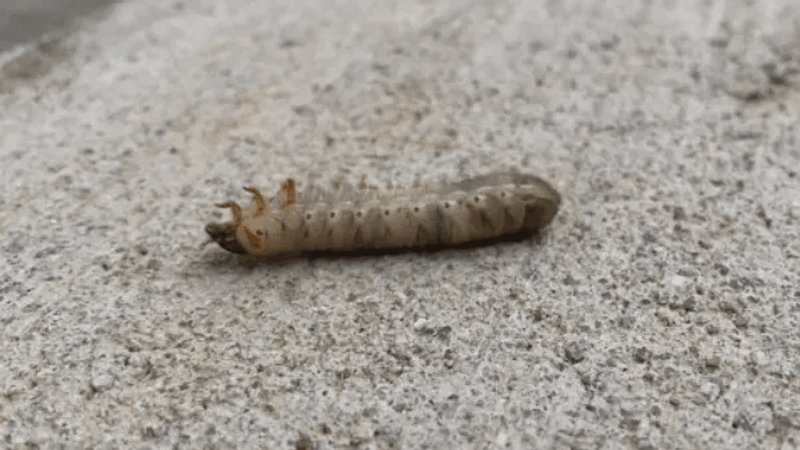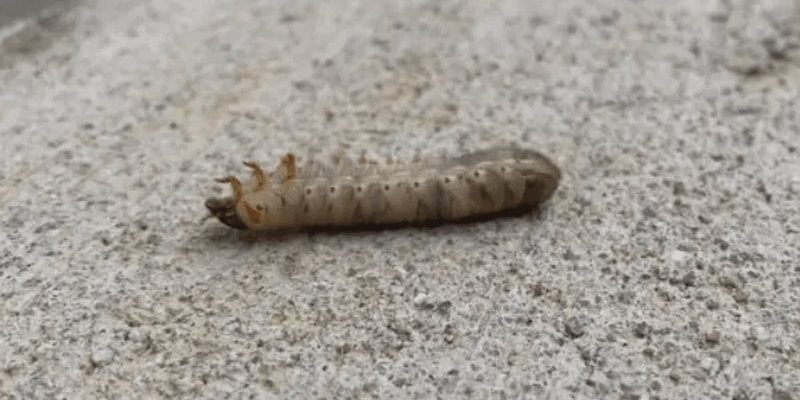
Grubs, which are the larval form of beetles, generally prefer moist soil, making rainy seasons an ideal time for them to breed and grow. If you’ve experienced heavy rains recently, it’s likely you’ve spotted a few more of these worms in your garden or yard than usual. Let’s dive deeper into how weather patterns affect grub populations and what you can do about them.
What are Grub Worms?
Before we dive into their relationship with rain, let’s get a feel for what grub worms actually are. These little guys are the larvae of various beetle species, including Japanese beetles and June bugs. They usually appear as small, white, C-shaped critters buried just below the surface of your lawn.
Grubs spend most of their lives underground, munching on grass roots and other organic materials. While they might seem harmless at a glance, large populations can lead to significant damage in gardens and lawns. As they feast on roots, they weaken the grass and plants, often leading to brown patches that can be unsightly.
Honestly, it’s not just about the bugs; it’s about the lifecycle. Grubs typically hatch in late spring and early summer. So, if you notice more of them popping up, it’s worth checking your yard for signs of damage too.
How Heavy Rains Affect Grub Populations
Now, let’s dig into the real question: how do those heavy rains play into grub populations? When the soil gets saturated, it creates the ideal breeding ground for grubs. Rains can wash away natural predators and help larvae survive in their cozy homes underground.
Heavy rains don’t just drown the grubs; they also help them thrive by providing moisture. You might even say the grubs are on a “rainy day diet.” With enough water, they can grow faster and reproduce in larger numbers. That’s a win for the grub population but often a lose for those of us trying to maintain our beautiful lawns.
Here’s the thing: while rain can help trigger a surge in grub numbers, it’s not solely responsible for their population spikes. Various factors like temperature, soil type, and lawn health also play huge roles.
Signs of Grub Damage
If you’re thinking, “Okay, but how do I know if these grubs are causing problems?” there are a few telltale signs to watch for. You’ll often see patches of grass turning brown or dead, especially if the grass pulls up easily, like a carpet.
Here are a few signs to keep an eye on:
- Patches of yellow or brown grass: This is often the first visible sign of grub damage.
- Dead grass that peels back easily: If you can lift sections of your grass, it likely means the roots are being eaten.
- Presence of birds or animals: If you’ve noticed more birds or raccoons digging in your yard, they may be looking for grubs.
If you spot these signs, it’s time to take action. Catching grubs early might save your lawn from more extensive damage.
How to Control Grub Worms
If you’ve confirmed that grubs are a problem in your yard, don’t worry. There are several ways to manage them effectively.
Firstly, you might want to consider using a **grub killer**. There are chemical treatments available, but be aware of their potential impact on your garden’s ecosystem. You might prefer natural remedies like beneficial nematodes, tiny worms that attack grubs without harming other beneficial insects.
Here are a few control methods to consider:
- Regular lawn maintenance: Keeping your grass healthy can make it less susceptible to grub damage.
- Applying pesticides: If you opt for chemicals, make sure to follow instructions carefully and apply them at the right times of year for the best results.
- Natural predators: Encourage birds and other insects that eat grubs by providing birdhouses or avoiding broad-spectrum insecticides.
You might also consider reseeding your lawn with grub-resistant grass varieties, which can help maintain a healthy lawn even when grubs are present.
Preventing Grub Infestations
Once you’ve dealt with the current grub issue, the next step is prevention. Here are a few strategies to help keep your yard grub-free:
1. **Soil Health:** Healthy soil leads to healthy grass. Regularly aerate your lawn and add organic matter to boost its resilience against pests.
2. **Watering Wisely:** While grubs love moist soil, focus on watering your lawn early in the morning. This helps prevent over-saturation and creates a less inviting environment for grubs.
3. **Lawn Fertilization:** A well-fertilized lawn can withstand the stress grubs cause. Regular feedings in the growing season can strengthen grass roots.
4. **Timing Treatments:** If you decide to use grub control products, timing is everything. Apply them right before the larvae hatch in late spring for maximum effectiveness.
By taking these steps, you can significantly reduce the chances of a grub infestation in your yard.
So, are grub worms more common after heavy rains? Yes, they often are. Rain creates the perfect conditions for these little critters to thrive. Understanding how weather impacts grub populations can help you take preventive measures and control any outbreaks effectively.
Remember, a healthy lawn is your best defense against grubs. With proper maintenance and timely interventions, you can keep your garden looking its best, even after those heavy downpours. So, don’t let the rain dampen your spirits—be proactive and turn your yard into a grub-free paradise!

